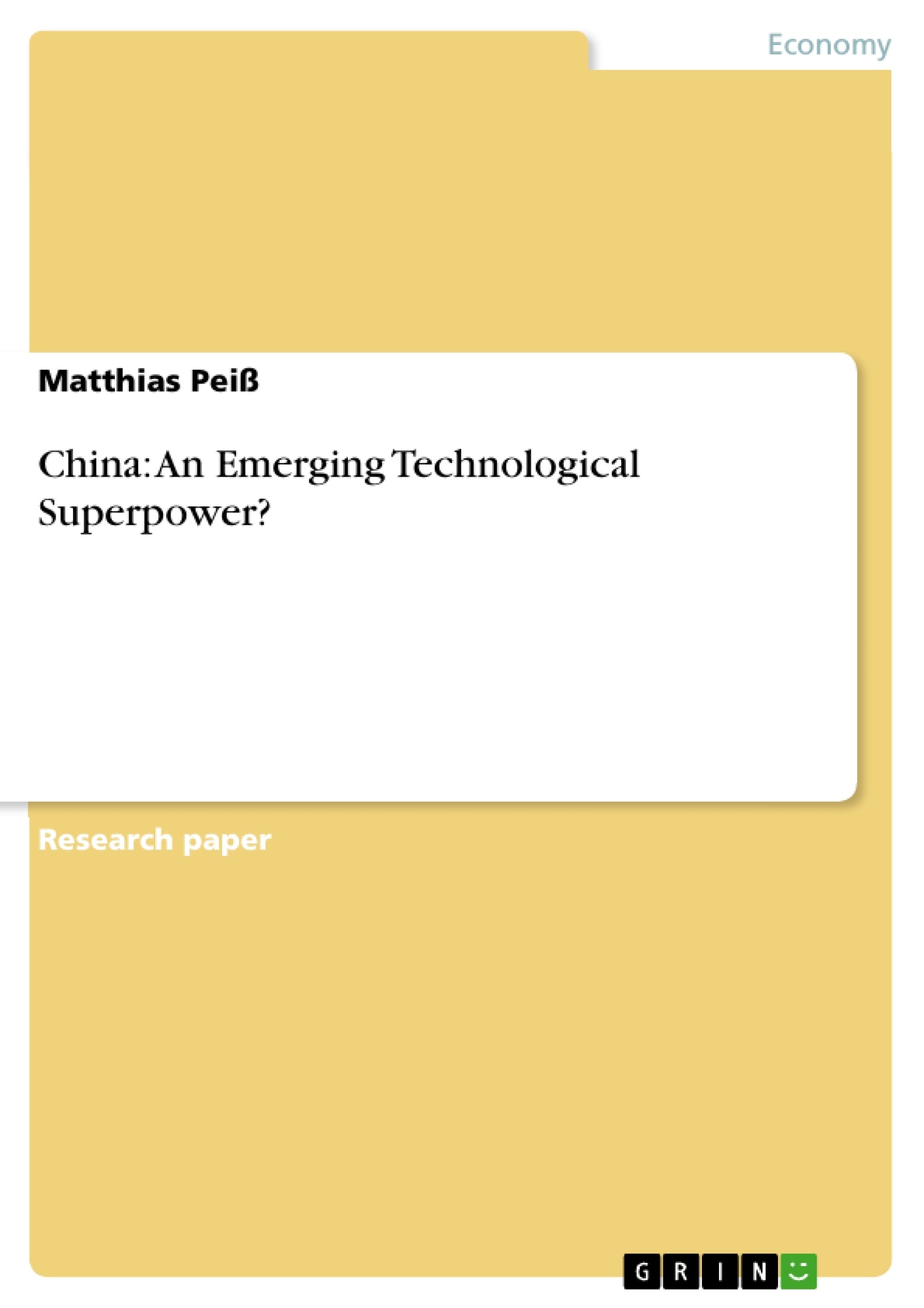This paper aims to answer the question of whether China is emerging as a technological superpower. After analysing the major constituents of China’s recent technological progress the Chinese education system is evaluated. It is shown that critical deficiencies as to indigenous innovation and technological competitiveness still exist. In conclusion, it is stressed that China’s great potential of future technological advancement significantly depends on enhancing its state of education.
Inhaltsverzeichnis (Table of Contents)
- Abstract
- Introduction
- The Technological Situation in China
- Economic Progress
- Foreign Contribution
- Classification of Technology
- Research and Development
- China's State of Education
- Stages of Education
- Compatibility of Education Systems
- China's Educational Achievements
- Educational Challenges
- International Competitiveness
Zielsetzung und Themenschwerpunkte (Objectives and Key Themes)
This paper investigates whether China is emerging as a technological superpower. It analyzes China's recent technological progress and evaluates its education system to determine if it supports this claim. The paper aims to identify any critical deficiencies hindering indigenous innovation and technological competitiveness.
- China's economic growth and technological advancement.
- The role of foreign investment in China's technological development.
- The structure and effectiveness of China's education system.
- China's capacity for indigenous innovation.
- China's technological competitiveness on the global stage.
Zusammenfassung der Kapitel (Chapter Summaries)
Introduction: This chapter sets the stage by discussing the global economic landscape and China's rapidly growing influence. It introduces the central question of whether China is a rising technological superpower and outlines the paper's approach to answering this question.
The Technological Situation in China: This section delves into the factors driving China's technological progress, exploring the impact of Deng Xiaoping's open-door policy and the establishment of special economic zones. It examines the significant role of foreign direct investment (FDI) in fostering economic growth and technological development.
China's State of Education: This section focuses on the Chinese education system, assessing its various stages, compatibility with international standards, achievements, challenges, and overall contribution to international competitiveness.
Schlüsselwörter (Keywords)
China, technological advancement, economic growth, education system, indigenous innovation, foreign direct investment (FDI), technological competitiveness, open-door policy.
- Quote paper
- Matthias Peiß (Author), 2009, China: An Emerging Technological Superpower?, Munich, GRIN Verlag, https://www.grin.com/document/123245



